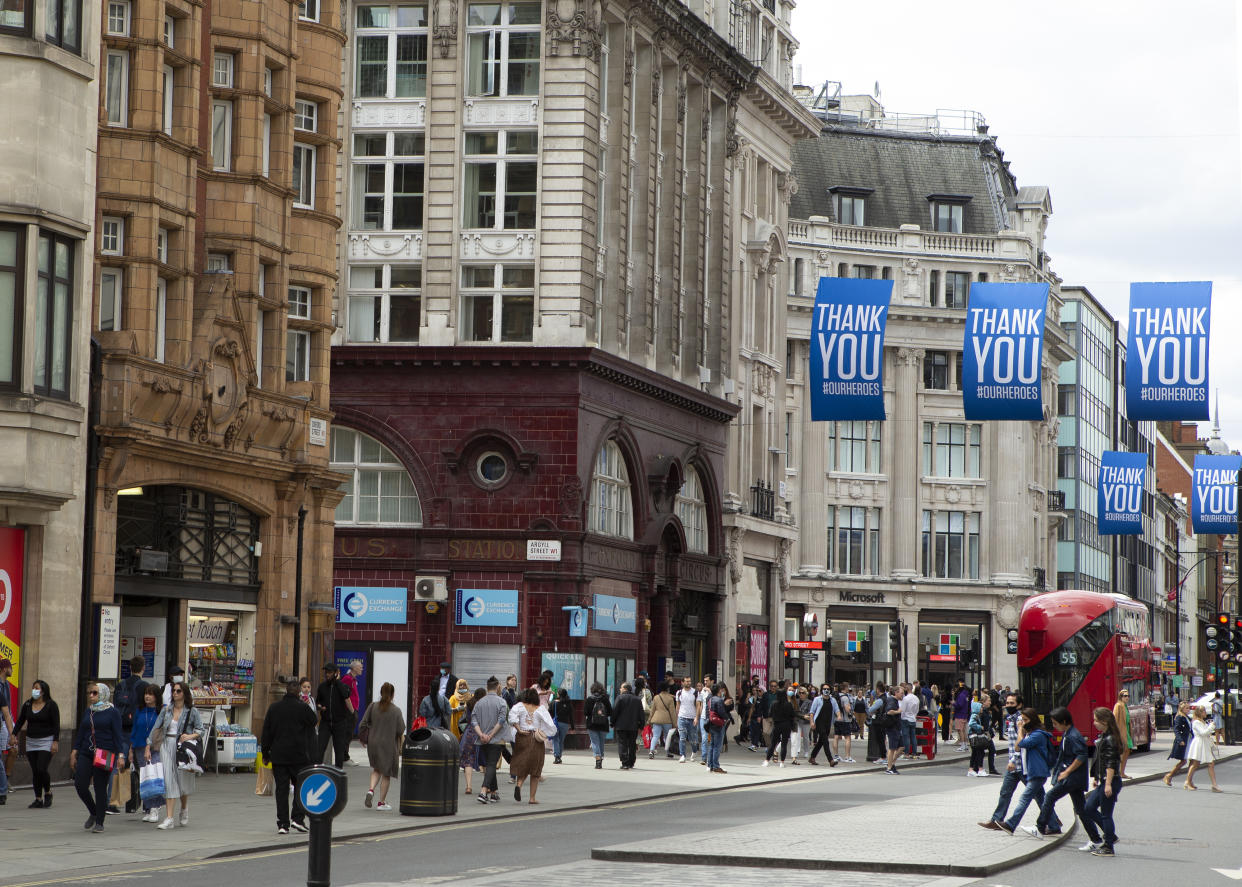London's R rate range rises above one as lockdown eases

London’s R rate range of coronavirus infection has crept above 1, meaning cases could increase if the spread is not managed.
The government has used R (reproduction) to assess whether the epidemic is in decline in the country. If R is below 1 it is decreasing, but above 1 signifies an increase.
During a live press conference on Friday morning, announcing the further relaxation of lockdown rules, Boris Johnson said: “The latest SAGE advice is that, across the UK, the R rate remains between 0.7 and 0.9.
“SAGE also assess that the number of infections is shrinking by between 5 and 1 per cent every day.”
However, the latest government figures have revealed that in London, the range has crept up to 0.8-1.1. The upper end of the range in the south west has also reached 1.1.
Scientists use the R rate to predict how far and how fast coronavirus will spread - and the number informs policy decisions about how to contain an outbreak.

If the virus has a reproduction rate of three, it means that each infected person will pass the virus on to three more people if no containment measures are introduced.
Anything above 1 would suggest the rate of infection is growing in an area.
Referring to the drop in the R rate, Johnson said: “This progress is testament to the phenomenal efforts of our NHS and social care staff working tirelessly on the frontline.
“And it has only been possible thanks to the character and fortitude with which you, the British people, have made fundamental changes to the way you all live and work.”
Following the PM’s briefing on Friday, experts admitted to being “cautiously optimistic” at the overall rate despite the further easing of lockdown measures.
Dr Daniel Lawson, Lecturer in Statistical Science, School of Mathematics, University of Bristol, said: "These data allow us to be cautiously optimistic.
“There is no indication that the epidemic has gotten out of hand as a result of the easements. However we must stay completely vigilant because there is a delay of at least two weeks before an increase in the reproductive rate of the virus is visible in the data."
However, Dr Konstantin Blyuss, reader in Mathematics at the University of Sussex, warned that local outbreaks were still a high risk. He said: “The epidemic is currently at a stage where there is a strong potential for subsequent local outbreaks if they are not quickly identified and effectively managed.
“In this respect, with restrictions being lifted, it is now more essential than ever to make sure that data on cases are collected and shared with local authorities, and the cases themselves are tracked and isolated, to avoid the resurgence of the full-scale epidemic.”

Dr Yuliya Kyrychko, also of the University of Sussex, added that an outbreak in London could be less easily controlled, especially in light of increased use of public transport.
She said: “Promoting the return of people to work and using public transport extensively, or as ‘normal’, without fully functional contact tracing programme/app might make it difficult to swiftly isolate exposed individuals and thus control subsequent spread at a local level.
“This might be especially challenging in London, where local lockdown might not be effective, if a large number of people are commuting to and from London."
The World Health Organisation (WHO) estimated at the beginning of March that the coronavirus R rate stood between 2 and 2.5 - meaning the spread of the virus could snowball, with each infected person infecting between two and three others.

Lockdown and social distancing measures in the UK led to the rate falling below one.
In May, the rate crept up, but it is thought that this was due to the outbreaks of COVID-19 infections in care homes.
The R rate of the seasonal flu is estimated to be roughly 1.3, while for the highly infectious measles it's between 12 and 18.
As of Friday afternoon the UK had to date reported 45,119 deaths and 293000 cases.
Coronavirus: what happened today
Click here to sign up to the latest news, advice and information with our daily Catch-up newsletter

 Yahoo News
Yahoo News 

